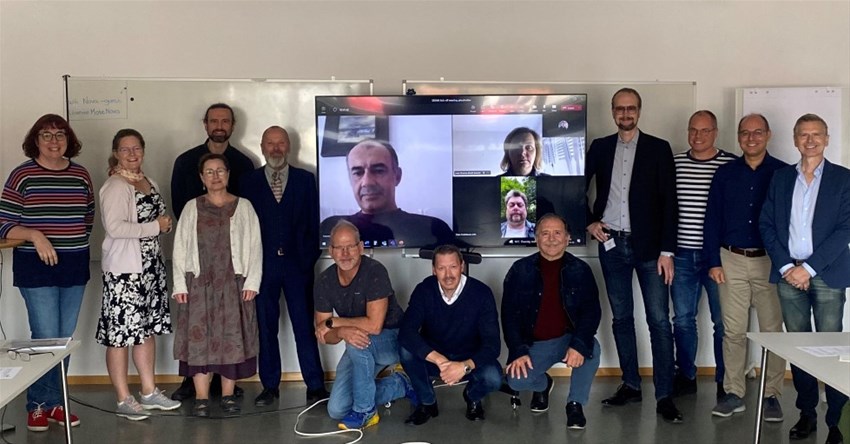New research will bring additive manufacturing closer to live industrial production
27 Dec 2022
Successful research on additive manufacturing using laser and wire will now be further developed in the new SESAM project. In collaboration with five industrial partners, researchers at University West will fine-tune parts of the technology for duplex stainless steel, and make it ready for industrial production.

The research team behind the SESAM project, which involves Alfa Laval, Adaxis, Procada, Voestalpine Böhler Welding and EIT Manufacturing North. Photo: University West.
Last year saw the completion of the successful SAMw research project, in which researchers and companies developed the additive manufacturing technology with laser and wire for duplex stainless steel. In just four years, the research team managed to get so far that the technology could be used for the manufacture of an Alfa Laval component that carries a heavy load, with successful results.
The research work is now being taken forward in the new SESAM project. The goal is for the technology to reach technology readiness level TRL 7, which means that it would be ready for application in live production.
‘We are now going to further develop various technical parts of this manufacturing process. At the same time, we are broadening our research work by testing the manufacture of more device geometries with this technology,’ says Robert Pederson, professor of materials technology at University West.
Building a manufacturing environment in a lab
The research team is going to develop a production system designed for additive manufacturing with laser and wire. The system will be integrated into robotic laser welding equipment in a production-like manufacturing environment at the Production Technology Centre in Trollhättan. With this production system, it will eventually be possible to manufacture demonstrator components in a way that mimics serial production.
‘In our research work, we receive valuable support from the participating companies. Alfa Laval staff participate in process development and monitor the material quality of manufactured material. Procada and Adaxis provide systems expertise. Voestalpine Böhler Welding supply welding wire. In addition, EIT Manufacturing North, with their large international network, will be in charge of disseminating information about the project and its results.’
From basic research to serial production
‘It is unusual for us as a university to work on such a high technology readiness level as we do in this project. It's exciting to be part of the whole journey from basic research to the implementation of new technology in a production-like environment,’ says Robert.
‘Although additive manufacturing has been worked on globally for a number of years, in different industries and for different applications, there are still very few manufacturing industries that have managed to scale up and implement additive manufacturing in mass production.’
‘This can, of course, be due to many different factors, but the most important factor is probably competence. When our skilled additive manufacturing engineers and researchers work together with competent industry people in well-planned projects, the results are often very good for everyone involved.’
FACTS
- Additive manufacturing is seen as an important part of the next generation of industrial production, where sustainability requirements are high.
- The manufacturing technology has many advantages; more efficient use of materials, lower energy consumption, and shorter lead times compared to traditional forging manufacturing methods, such as blacksmithing, which require extensive machining.
- University West’s researchers have more than 15 years of experience in additive manufacturing with laser and wire.
- Read more about the three-year research project SESAM, funded by Vinnova.
- Article on previous research in the SAMw project
Contact: Robert Pederson, professor of materials technology, University West.
SESAM is an acronym for SustainablE Steel Additive Manufacturing


